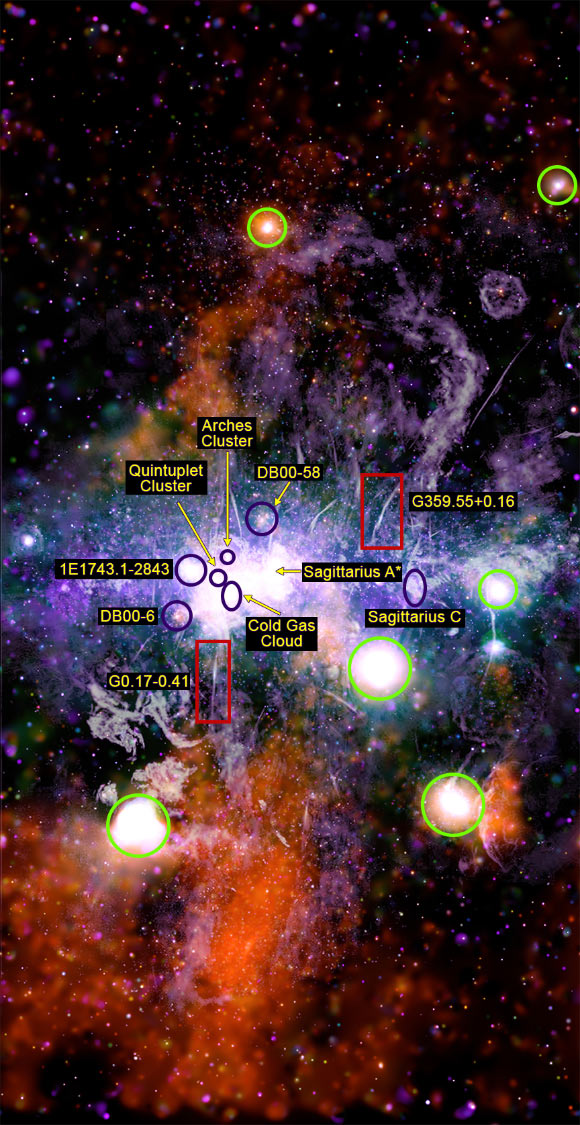Using NASA’s Chandra X-ray Observatory and the MeerKAT radio telescope in South Africa, an astronomer from the University of Massachusetts, Amherst has mapped the central region of our Milky Way Galaxy.

This panorama shows the central region of the Milky Way Galaxy. It builds on previous surveys from NASA’s Chandra X-ray Observatory and other telescopes, and expands Chandra’s high-energy view farther above and below the plane of the Galaxy than previous imaging campaigns. X-rays from Chandra are orange, green, and purple, showing different X-ray energies, and the radio data from MeerKAT are gray. Image credit: NASA / CXC / UMass / Q.D. Wang / NRF / SARAO / MeerKAT.
“The galaxy is like an ecosystem,” said Professor Daniel Wang, an astronomer in the Department of Astronomy at the University of Massachusetts, Amherst.
“We know the centers of galaxies are where the action is and play an enormous role in their evolution.”
“And yet, whatever has happened in the center of our own Milky Way Galaxy is hard to study, despite its relative proximity to Earth, because it is obscured by a dense fog of gas and dust.”
The team’s findings give the clearest picture yet of a pair of X-ray-emitting plumes that are emerging from the region near the massive black hole lying at the center of our Galaxy.

A labeled version of the panorama of the Milky Way’s central region. Image credit: NASA / CXC / UMass / Q.D. Wang / NRF / SARAO / MeerKAT.
Even more intriguing is the discovery of an X-ray thread called G0.17-0.41, located near the southern plume.
“This thread reveals a new phenomenon. This is evidence of an ongoing magnetic field reconnection event,” Professor Wang said.
“The thread probably represents only the tip of the reconnection iceberg,” he added.
A magnetic field reconnection event is what happens when two opposing magnetic fields are forced together and combine with one another, releasing an enormous amount of energy.
“It’s a violent process and is known to be responsible for such well-known phenomena as solar flares, which produce space weather powerful enough to disrupt power grids and communications systems here on Earth. They also produce the spectacular Northern Lights,” Professor Wang said.
Astronomers now think that magnetic reconnection also occurs in interstellar space and tends to take place at the outer boundaries of the expanding plumes driven out of the Milky Way’s center.
“What is the total amount of energy outflow at the center of the Galaxy? How is it produced and transported? And how does it regulate the Galactic ecosystem?” Professor Wang said.
“These are the fundamental questions whose answers will help to unlock the history of our Galaxy.”
The team’s results were published in the Monthly Notices of the Royal Astronomical Society.
_____
Q. Daniel Wang. 2021. Chandra large-scale mapping of the Galactic Centre: probing high-energy structures around the central molecular zone. MNRAS 504 (2): 1609-1618; doi: 10.1093/mnras/stab801







